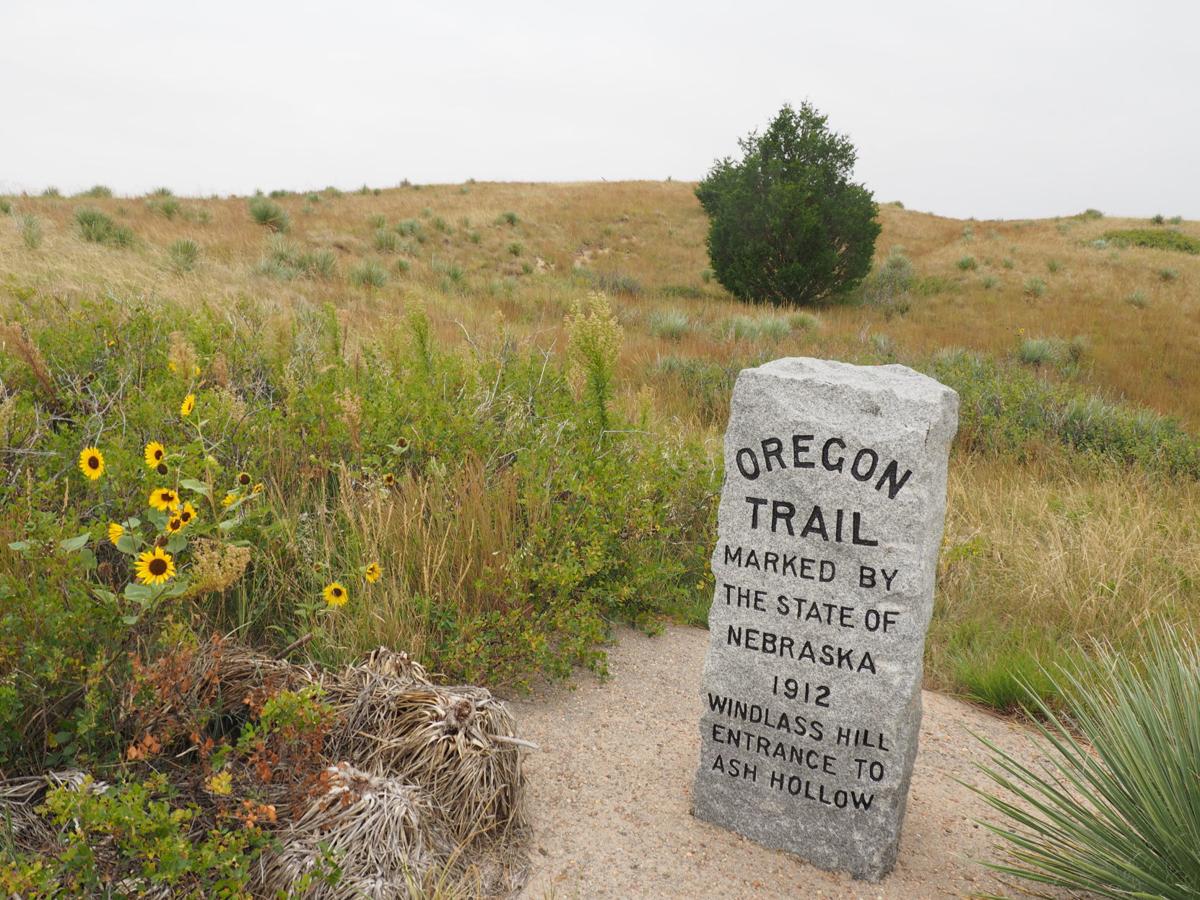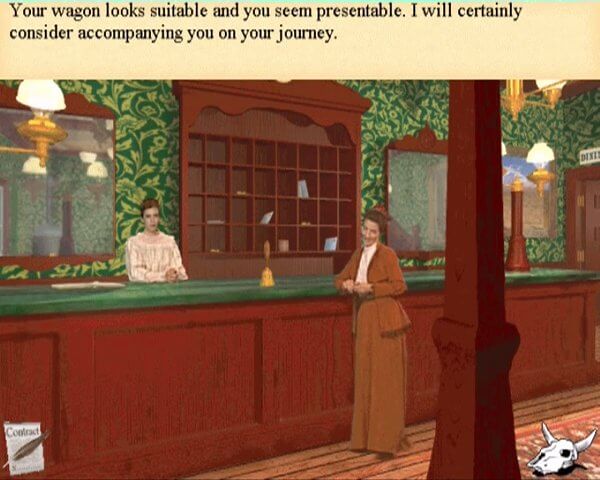
Oregon Trail Iii
From Wyoming Tales and Trails This page: Oregon Trail continued from previous page, the Pony Express, the Pacific Telegraph. |
Oregon Trail II is a sequel to Oregon Trail.The game follows the basic structure of the predecessor, which is a simulation of traveling through towns and wilderness in the state of Oregon, with adventure-like gameplay elements and educational material.

| About This Site |
Pony Express rider. On April 3, 1860, J. W. 'Billy' Richardson (Johnson William Richardson) on a bay mare departed from St. Joseph, Missouri, carrying mails destined to Sacramento. And from Sacramento Harry Roff set out eastward. Fresh horse were required every 10-15 miles and fresh riders every 75-100 miles. A one-way trip would use 75 horses. Six days later, on April 9 at 6:45 p.m., the first rider from the east reached Salt Lake City. Utah. On n April 14, 1860, the first pouch was delivered to San Francisco. Thus, mail was carried across the West connecting the nation in 10 to 12 days. A copy of Lincoln's Inaugural Address was carried in only seven days and seventeen hours. But with the War, faster communcation was required. Pony Express rider, Robert 'Pony Bob' Haslam, from a painting by H. H. Cross. Pony Express Riders, 1860-1861. Left, Billy Richardson; Right, Johnny Frye Frank E. Webner, Pony Express rider, circa 1860-1861. National Archives. Gunfighter tactical. Gunfighter Tactical is San Diego's premier black rifle shop. Sheepdogs Need Sharp Teeth. We do out of state transfers. The transfer fee is $60, DROS is $25. You will also have to pay a 7.75% usage tax to the state of California. When other shops treated my wife like a second class citizen, the guys at gunfighter tactical stepped up and gave her a great gun buying experience. They treat everyone fairly, and with respect. It's a small shop, but do not let that fool you, these guys can get you whatever you need. Just as J. W. Richardson disappeared following the end of the Pony Express, other riders have vanished into the pages of history. Such is Frank Webner. Census data indicates that there were several Frank E. Webner's. Most, however, do not match on age. Two have been found, but they were born after the pony express ended and do not have a life history which would match riding on the Frontier. One, as an example, was a CPA. One Frank Webner found in the 1880 Kansas census was born in 1842. Webner, however, may be a transcriptional error in the census, since his spouse was named Wegner and other Wegners were found in the same township. And just as W. B. Richard's account of being a Pony Express rider is suspect, other suspicious claims arose of participation as a rider. One, as an example, was 'Charlie B. 'Broncho Charlie' Miller who claimed to have ridden for the line at age 11. However, some of the riders were in fact young. The average age of the riders was 19 and the youngest was David Jay age 13 who rode the Seneca to Big Sandy run and occasionally rode as far as Julesberg. The rider were well paid for the age, pulling down $100.00 to $150.00 a month. William Lightfoot Visscher in his 1908 A Thrilling and Truthful History of the Pony Express cites a 1907 letter from Pony Express rider J. H. Keetley crediting Alex Carlyle, a nephew of Company superintendent Ben Ficklin, as the first rider out of St. Joseph. Keetley, however, gives the date of departure as April 16. Carlyle dropped out of the service of the Company after about two months and died of consumption about six months later. In addition to Roff, William 'Sam' Hamilton has also been credited as the first rider leaving Sacramento. Roff, however, was given credit by Alexander Majors. The Pony Express did not use ponies. Instead, according to Pony Express farrior, Levi Hensel, the animals were half-breed California mustangs. Hensel referred to the horses as 'imps of Satan.' He noted that it took two men to hold a horse while the farrior trimmed the hooves and nailed the shoes. Shoeing a horse took half a day. The Pony Express was a financial failure, losing, according to Visscher $200,000 (in 1861 dollars, equal to between $6,000,000.00 and $8,000,000.00 today). Indeed, while it was the wonder of the age, its rates, initially $5.00 for a half ounce letter, meant that the service was generally used only by banks, news organizations, and for governmental dispatches. One of the more important users of the service was the British for communication to India. The Suez Canal did not open until 1869. Thus, messages were sent across the Pacific by ship to San Francisco, by Pony Express to St. Joseph, then by telegraph to New York, and finally by ship to England. The Pony Express was short lived. For almost immediately construction of the next great enterprise commenced, the great Creighton Telegraph Line. As the telegraph line extended eastward from Sacramento and westward from Omaha, the Pony Express line became shorter and shorter. On October 18, 1861, Creighton's line reached Salt Lake City. Six days later on October 24 the line from California reached Salt Lake City. On the same day the western terminal for the Pony express in Placervile was closed. Two days later the Pony Express was officially closed. The last mochilas were delivered in San Francisco in November. Pony Express rider passing construction crews for Creighton Telegraph line. Woodcut, Harpers Weekly, 1867. From a painting by George M. Ottinger. Next page: The Telegraph. |
GAME LIST GENERATOR.Generates a list of all games that match the criteria settings.